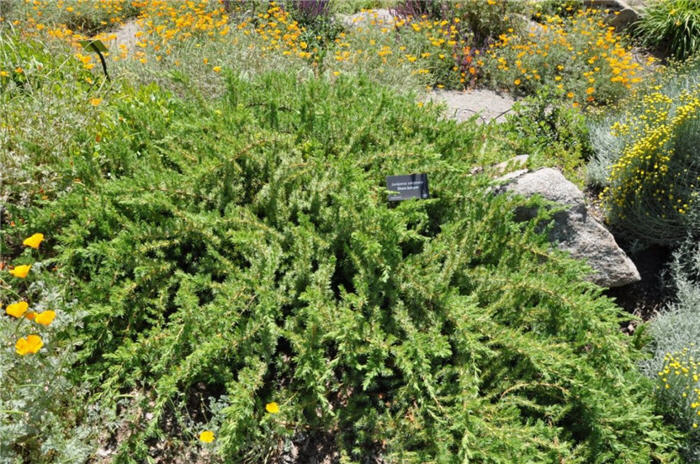| Botanical Name: Juniperus conferta | |
| Common Name: Shore Juniper |

-
Anatomy
-
Culture
-
Design
Plant Type
Conifer, Shrub, Ground cover
Height Range
1-3'
Flower Color
n/a
Flower Season
n/a
Leaf Color
Blue Green
Bark Color
Brown, Red
Fruit Color
n/a
Fruit Season
n/a
Sun
Full
Water
Low, Medium
Growth Rate
Moderate, Slow
Soil Type
Sandy, Clay, Loam, Rocky, Unparticular
Soil Condition
Average, Rich, Poor, Well-drained, Dry
Soil pH
Neutral
Adverse Factors
n/a
Design Styles
Formal, Mediterranean, Ranch
Accenting Features
n/a
Seasonal Interest
Winter, Spring, Summer, Fall
Location Uses
Background, Shrub Border, Parking Lot, Walls / Fences
Special Uses
Erosion Control, Filler
Attracts Wildlife
n/a
Information by: Stephanie Duer
Photographer: Linda Engstrom GardenSoft
Photographer: Linda Engstrom GardenSoft
-
Description
-
Notes
Shore juniper is generally a dense, low, spreading juniper, growing 1 to 2 feet tall and 6 to 9 feet wide (growth may vary among cultivars). Coloration tends towards blue-green, with cultivars selected for superior color. Though evergreen, needles may turn slightly yellow during the winter months. Junipers are tough shrubs, and well suited to hot dry sites; just put them where they have the room to spread out.
Grow in any soil that is well draining, including sandy, gravelly, or clay soils, but they must be well draining. Best growth in full sun. Once established, it tolerates dry soils and heat. Avoid shearing, as that will made the juniper woody and stiff; instead, prune selectively if necessary (see Guides).